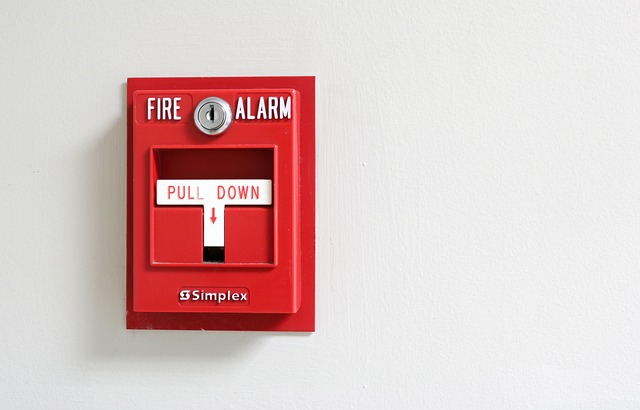Common Mistakes to Avoid When Installing Fire Alarm Systems
Installing a fire alarm system is a critical step in safeguarding your property, but it's easy to make mistakes that could compromise its effectiveness. In this guide, you'll discover the most common pitfalls to avoid, ensuring your system operates flawlessly when you need it most. Don’t leave your safety to chance — learn how to install your fire alarm system correctly.
Using Incompatible Components
Using compatible components is essential for the efficient operation of fire alarm systems. Incompatible parts can lead to system failures, false alarms, or even an inability to detect actual fires. Your chosen reputable fire alarm provider will explain how compatibility ensures that all components, such as detectors, control panels, and sounders, work seamlessly together, providing accurate and reliable fire detection and alerting. Such compatibility also ensures that the system complies with fire safety regulations and standards.
To avoid mistakes, always verify that components meet the manufacturer's specifications and are designed to work with each other. Consult the system’s manual and, if necessary, contact the manufacturer or a professional installer for guidance. Regularly updating and maintaining the system can also prevent compatibility issues and ensure ongoing protection for your property.
Incorrect Placement
Correct placement of fire alarm components is crucial for ensuring maximum coverage and optimal detection. Improperly placed detectors might miss the early signs of a fire, delay the alarm, and reduce the escape time, putting lives at risk. Detectors should be placed in strategic locations such as ceilings, hallways, and sleeping areas to identify smoke or heat effectively.
Always refer to the installation guidelines specified by the manufacturer. Consider factors like airflow, ceiling height, and potential obstructions that could impede the detector's functionality. It's also wise to carry out regular site assessments and consultations with fire safety professionals to identify and correct any placement issues. Following these steps ensures your fire alarm system provides reliable monitoring and alerts, keeping your property and its occupants safe.
Skipping Testing and Maintenance
Checking if your fire alarm system is functioning correctly is a crucial step that should never be skipped. It's easy to assume that the system will work perfectly once installed, but components can degrade or malfunction over time. Focus on the following:
- Regular testing
- Inspect detectors
- Check power sources
- Verify alarm signals
- Inspect control panel
- Review documentation
- Inspect wiring and connections
- Update software/firmware
- Train personnel
- Comply with regulations
Regular testing and maintenance are vital to ensure fire alarm systems function correctly during emergencies. Over time, components can degrade, power sources may fail, and software updates are required. Testing assures that all parts are operational, reducing the risk of undetected fires and ensuring compliance with safety regulations.
Ignoring Local Regulations
These regulations often reflect the latest safety research and technological advancements, ensuring that your fire alarm system meets the minimum acceptable standards for protecting property and lives. Ignoring these standards can result in ineffective fire detection and serious legal consequences.
To prevent mistakes, thoroughly research your local fire safety requirements and ensure your system complies with them. Work with certified professionals who are familiar with these regulations, and regularly review any updates to local laws to maintain ongoing compliance. Proper adherence to local codes will help ensure the effectiveness and legality of your fire alarm system.
Poor Wiring Practices
Proper wiring is crucial for the reliable functioning of fire alarm systems, as it ensures robust connectivity and minimizes the risk of malfunctions. Inadequate wiring can lead to system failures, false alarms, or worse, a failure to detect fires promptly. To avoid wiring mistakes, always use the recommended wire gauge and type specified by the manufacturer.
Follow detailed wiring diagrams and guidelines to prevent issues like short circuits or interference. Ensure all connections are secure and insulated correctly to avoid potential fire hazards. Regularly inspect and test the wiring as part of your maintenance routine. Engaging a certified electrician or a professional installer with experience in fire alarms can also help ensure the wiring is done safely and correctly.
Improper Documentation
Documentation provides a detailed record of the system's design, installation process, and component specifications, which is crucial for troubleshooting and ensuring compliance with safety regulations. Without accurate documentation, it becomes challenging to perform maintenance, make upgrades, or rectify problems, leading to potential system failures.
To avoid documentation mistakes, meticulously record every step of the installation process, including wiring diagrams, placement maps, and specifications of each component. Ensure that all changes and updates are logged promptly. Utilizing standardized forms and checklists can also help maintain consistency and ease of reference. Keeping thorough records guarantees that your fire alarm system remains reliable and up to code, enhancing the safety of your property.
Avoiding these common mistakes when installing your fire alarm system is essential to ensuring the safety and security of your property. By using compatible components, correctly placing detectors, regularly testing and maintaining, following local regulations, practicing proper wiring, and maintaining thorough documentation, you can ensure that your fire alarm system performs reliably when you need it most.

